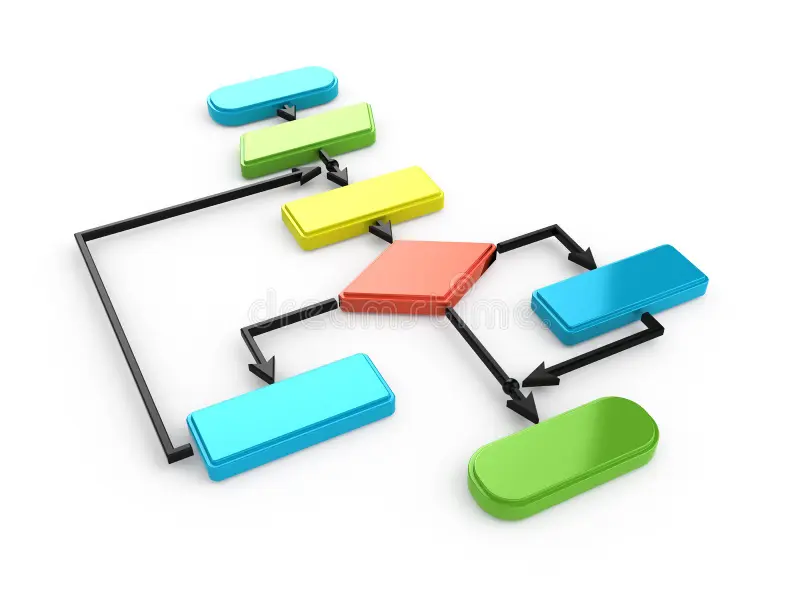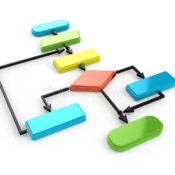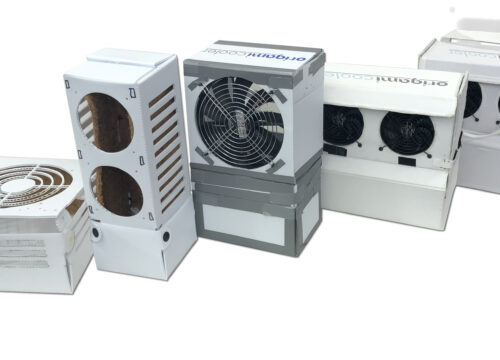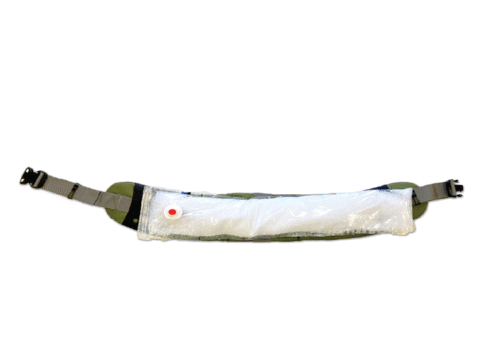My Product Design & Development Process Template

My Product Design & Development Process Template
A comprehensive framework for systematic product development
How to Use This Template
This template provides a structured approach to product design and development projects. Each section includes:
- Purpose: What this section accomplishes in your project
- Process: Step-by-step approach to complete this phase
- Deliverables: What you should produce for this section
- Success Criteria: How to know you’ve completed this phase effectively
Complete sections in order, as each builds upon previous work. Revisit and refine earlier sections as you learn more through the process.
1. Project Overview & Context
Purpose
Establish project foundation, scope, and strategic context. This section creates the “north star” that guides all subsequent decisions.
Process
- Define the core design challenge in one clear sentence
- Establish project constraints (timeline, resources, scope)
- Identify your role and any collaborators/advisors
- Classify the product category and design challenge type
- Write your elevator pitch (30-second project summary)
- Create mission statement explaining the project’s purpose and impact
Key Questions to Answer
- What problem are you solving and for whom?
- What are your project limitations and boundaries?
- How does this project fit into the broader market/industry?
- What makes this project worth pursuing?
Deliverables
- [ ] Project status and timeline
- [ ] Team composition and roles
- [ ] Product category classification
- [ ] Elevator pitch (2-3 sentences)
- [ ] Mission statement (1-2 paragraphs)
Success Criteria
✅ Anyone reading this section understands what you’re building and why
✅ Project scope is clearly defined and achievable
✅ Mission statement provides clear direction for decision-making
2. Market Research & Strategic Positioning
Purpose
Understand the commercial landscape, identify opportunities, and validate that your project addresses a real market need.
Process
A. Market Analysis
- Research total addressable market (TAM) size and growth
- Identify market segments relevant to your product
- Analyze market trends affecting your product category
- Calculate market opportunity for your specific solution
B. Target User Research
- Create detailed user personas (3-5 primary user types)
- Define demographics (age, income, location, education)
- Identify psychographics (values, motivations, behaviors)
- Map user journey and touchpoints with your product category
- Document pain points and unmet needs
C. Competitive Analysis
- Identify 3-5 direct competitors and 3-5 indirect competitors
- Analyze pricing, features, and positioning for each
- Identify competitive advantages and gaps in market
- Benchmark performance metrics where possible
Research Methods
- Industry reports and market research
- User interviews (minimum 10-15 people)
- Online surveys (minimum 50-100 responses)
- Competitive product analysis
- Expert interviews with industry professionals
Deliverables
- [ ] Market size analysis with supporting data
- [ ] Detailed user personas with supporting research
- [ ] Competitive landscape mapping
- [ ] Market opportunity assessment
- [ ] SWOT analysis for your project
Success Criteria
✅ You can articulate the market opportunity with quantitative support
✅ User personas are based on real research, not assumptions
✅ You understand competitive landscape and your differentiation
3. Use Case Scenarios & Context Analysis
Purpose
Define specific situations where your product creates value, ensuring your design addresses real-world usage contexts.
Process
- Identify 3-5 primary use cases where your product solves problems
- Create detailed scenario narratives for each use case
- Map user needs and constraints for each scenario
- Identify current solutions and their limitations
- Define your solution’s advantage in each context
Scenario Documentation Format
For each use case:
- Context: Where, when, and why this scenario occurs
- User Profile: Who experiences this scenario
- Current Process: How users currently handle this situation
- Pain Points: What goes wrong or could be better
- Success Criteria: What would make this scenario successful
- Your Solution: How your product improves this scenario
Deliverables
- [ ] 3-5 detailed use case scenarios
- [ ] User journey maps for each scenario
- [ ] Current vs. future state comparison
- [ ] Context analysis (environmental, social, technical factors)
Success Criteria
✅ Scenarios feel authentic and relatable to target users
✅ Each scenario clearly demonstrates product value
✅ You understand the full context of product usage
4. Problem Definition & Design Challenge
Purpose
Synthesize research into a clear, actionable problem statement that guides your design decisions.
Process
- Synthesize research findings into key insights
- Identify root causes of user problems (not just symptoms)
- Define the core design challenge in one clear statement
- List specific user pain points with supporting evidence
- Identify innovation opportunities where you can create unique value
Problem Statement Framework
“[Target User] needs [what] because [why], but current solutions fail because [current limitations]. This creates an opportunity to [your innovation approach].”
Deliverables
- [ ] Comprehensive problem statement
- [ ] Root cause analysis
- [ ] Prioritized list of user pain points
- [ ] Innovation opportunity identification
- [ ] Design challenge definition
Success Criteria
✅ Problem statement is specific, actionable, and user-focused
✅ You understand why current solutions are inadequate
✅ Innovation opportunities are clearly identified and feasible
5. Solution Architecture & Design Philosophy
Purpose
Define your approach to solving the identified problem, including core design principles and technical innovation strategy.
Process
- Define design philosophy and core principles
- Identify key innovations your solution will deliver
- Create system architecture overview
- Map component relationships and dependencies
- Define success metrics for your solution
Design Philosophy Development
- What values drive your design decisions?
- What trade-offs will you optimize for?
- How does your approach differ from existing solutions?
- What makes your solution uniquely valuable?
Technical Innovation Analysis
- What new technologies or approaches will you use?
- How do these innovations solve user problems?
- What are the technical risks and mitigation strategies?
- How will you validate technical feasibility?
Deliverables
- [ ] Design philosophy statement
- [ ] Core design principles (3-5 key principles)
- [ ] Technical innovation overview
- [ ] System architecture diagram
- [ ] Solution success metrics definition
Success Criteria
✅ Design philosophy provides clear decision-making framework
✅ Technical innovations directly address user pain points
✅ Solution architecture is feasible and scalable
6. Design Development Process
Purpose
Document your iterative design process, showing how you moved from concept to refined solution.
Process Structure
Plan for 3-4 development phases:
Phase 1: Conceptual Exploration (Week 1-2)
Activities:
- Brainstorm multiple solution approaches
- Create initial concept sketches
- Evaluate concepts against user needs
- Select top 2-3 concepts for development
Deliverables:
- [ ] Concept generation documentation
- [ ] Evaluation criteria and concept scoring
- [ ] Selected concepts with rationale
Phase 2: Technical Development (Week 3-4)
Activities:
- Develop technical specifications
- Research materials and manufacturing
- Create detailed design solutions
- Address technical feasibility concerns
Deliverables:
- [ ] Technical specification documents
- [ ] Material selection analysis
- [ ] Manufacturing feasibility assessment
- [ ] Risk analysis and mitigation plans
Phase 3: Detailed Design (Week 5-6)
Activities:
- Create detailed CAD models or design specifications
- Develop engineering drawings
- Plan manufacturing processes
- Design for manufacturability analysis
Deliverables:
- [ ] Detailed design documentation (CAD, drawings, specifications)
- [ ] Manufacturing process planning
- [ ] Cost analysis and optimization
- [ ] Design for manufacturing recommendations
Phase 4: Prototyping Strategy (Week 7-8)
Activities:
- Plan prototyping approach and fidelity levels
- Create functional prototypes
- Develop testing protocols
- Execute validation testing
Deliverables:
- [ ] Prototyping strategy and timeline
- [ ] Functional prototype(s)
- [ ] Testing protocol documentation
- [ ] Initial validation results
Success Criteria
✅ Design process shows clear iteration and improvement
✅ Technical challenges are identified and addressed
✅ Prototypes validate key design assumptions
7. Materials Engineering & Selection
Purpose
Make informed material choices that optimize performance, sustainability, and cost while meeting design requirements.
Process
- Identify performance requirements for each component
- Research material options meeting those requirements
- Analyze trade-offs between materials (performance/cost/sustainability)
- Select optimal materials with technical justification
- Plan sourcing strategy and supply chain considerations
Material Analysis Framework
For each major component:
- Performance Requirements: Strength, temperature, environment, etc.
- Material Options: 3-5 candidate materials
- Comparison Analysis: Properties, cost, availability, sustainability
- Selection Rationale: Why this material is optimal
- Sourcing Strategy: Where to obtain, backup suppliers
Manufacturing Considerations
- How do material choices affect manufacturing processes?
- What are the cost implications of material selections?
- How do materials impact product sustainability?
- What quality control requirements do materials create?
Deliverables
- [ ] Material requirements specification
- [ ] Material selection analysis for each component
- [ ] Cost structure analysis
- [ ] Sourcing and supply chain strategy
- [ ] Sustainability impact assessment
Success Criteria
✅ Material choices are technically justified
✅ Cost targets are achievable with selected materials
✅ Sustainability considerations are integrated
8. User Experience Design & Human Factors
Purpose
Ensure your product creates positive user experiences across all touchpoints and use contexts.
Process
- Map complete user journey from discovery to disposal
- Design key interaction points for usability and delight
- Address accessibility requirements for diverse users
- Plan safety and risk management features
- Create user education strategy for product adoption
User Experience Mapping
- Pre-purchase: How do users discover and evaluate your product?
- Unboxing/Setup: What is the first-use experience?
- Regular Use: How does the product perform in typical usage?
- Maintenance: What ongoing care does the product require?
- Problem Resolution: How do users get help when things go wrong?
Human Factors Analysis
- Physical Ergonomics: Size, weight, grip, controls
- Cognitive Load: How complex is the product to understand/use?
- Environmental Factors: How does context affect usability?
- Accessibility: Can users with different abilities use this product?
Deliverables
- [ ] Complete user journey documentation
- [ ] Interaction design specifications
- [ ] Accessibility compliance analysis
- [ ] Safety and risk management plan
- [ ] User education and support strategy
Success Criteria
✅ User experience is optimized for target use contexts
✅ Product is accessible to diverse user populations
✅ Safety risks are identified and mitigated
9. Testing, Validation & Performance Analysis
Purpose
Validate your design assumptions and demonstrate that your product meets performance requirements and user needs.
Testing Strategy Development
Plan multiple validation phases:
Laboratory Testing
Purpose: Validate technical performance under controlled conditions Process:
- Define performance metrics and test protocols
- Create controlled test environment
- Execute standardized performance tests
- Compare results against requirements and competitors
- Document performance data and analysis
Deliverables:
- [ ] Test protocol documentation
- [ ] Performance test results
- [ ] Competitive benchmarking data
- [ ] Technical validation report
User Testing
Purpose: Validate user experience and usability in real contexts Process:
- Recruit representative test users (minimum 10-15 people)
- Design user testing protocols and scenarios
- Conduct moderated user testing sessions
- Collect quantitative and qualitative feedback
- Analyze results and identify improvement opportunities
Deliverables:
- [ ] User testing protocol
- [ ] User feedback compilation
- [ ] Usability analysis report
- [ ] User experience optimization recommendations
Field Testing (if applicable)
Purpose: Validate performance in real-world usage conditions Process:
- Plan field testing scenarios and environments
- Recruit experienced users for extended testing
- Monitor product performance over time
- Collect feedback on real-world usage patterns
- Validate durability and reliability claims
Deliverables:
- [ ] Field testing plan and protocols
- [ ] Real-world performance data
- [ ] Long-term reliability assessment
- [ ] User adoption and satisfaction metrics
Success Criteria
✅ Testing validates key design assumptions
✅ Performance meets or exceeds requirements
✅ User feedback confirms product-market fit
10. Results, Impact & Future Development
Purpose
Synthesize project outcomes, assess impact, and plan future development directions.
Process
Outcome Assessment
- Measure against original objectives – did you achieve what you set out to do?
- Quantify performance achievements with specific metrics
- Document user acceptance and satisfaction levels
- Assess commercial viability and market potential
- Identify key learnings and insights gained
Impact Analysis
- Technical innovation contribution – what new knowledge did you create?
- Market potential assessment – what commercial opportunity exists?
- User value creation – how does this improve people’s lives?
- Industry influence – how might this affect the broader market?
- Educational value – what did you learn that others can benefit from?
Future Development Planning
- Short-term next steps (6-12 months)
- Medium-term development (1-3 years)
- Long-term vision (3-5 years)
- Required resources and partnership needs
- Risk assessment and mitigation strategies
Deliverables
- [ ] Project outcome summary with quantified achievements
- [ ] Impact assessment across multiple dimensions
- [ ] Lessons learned documentation
- [ ] Future development roadmap
- [ ] Resource requirements and business case
Success Criteria
✅ Project outcomes are clearly documented and measurable
✅ Impact extends beyond immediate project scope
✅ Future development path is realistic and compelling
Project Documentation Standards
General Guidelines
- Be Specific: Use quantitative data wherever possible
- Show Your Work: Document your process, not just results
- Think Critically: Challenge your own assumptions and decisions
- Stay User-Focused: Always connect decisions back to user needs
- Professional Presentation: Organize content clearly with visual aids
Visual Documentation
Include appropriate visuals throughout:
- Sketches and concept development drawings
- CAD models and technical drawings
- Prototype photos and testing documentation
- User research photos and data visualizations
- Process documentation and behind-the-scenes work
Portfolio Integration
This comprehensive case study becomes a major portfolio piece demonstrating:
- Research skills and user-centered design process
- Technical competency in engineering and materials
- Systems thinking and strategic planning ability
- Professional communication and project management
- Innovation capability and creative problem-solving
Timeline & Project Management
Recommended Schedule (16-week semester project)
Weeks 1-2: Market Research & Problem Definition
Weeks 3-4: User Research & Competitive Analysis
Weeks 5-6: Solution Architecture & Design Philosophy
Weeks 7-10: Design Development Process (4 phases)
Weeks 11-12: Materials Engineering & UX Design
Weeks 13-14: Prototyping & Testing
Weeks 15-16: Documentation & Presentation Preparation
Success Metrics
- Process Quality: Following systematic design methodology
- Research Rigor: Basing decisions on evidence rather than assumptions
- Innovation Level: Creating novel solutions to real problems
- Commercial Viability: Developing feasible business propositions
- Communication Excellence: Professional documentation and presentation
This template provides a comprehensive framework for product design and development projects that will result in portfolio-quality case studies demonstrating professional design capability and strategic thinking.





